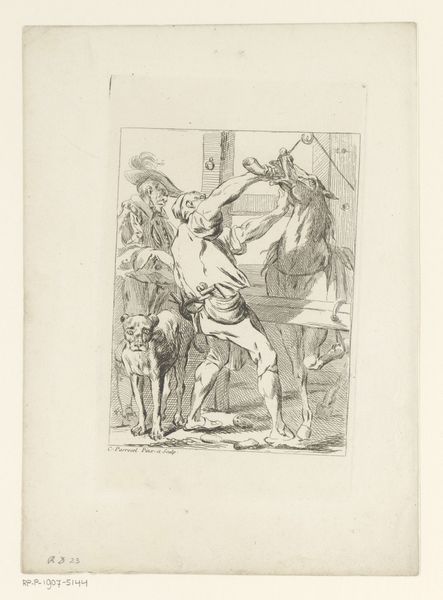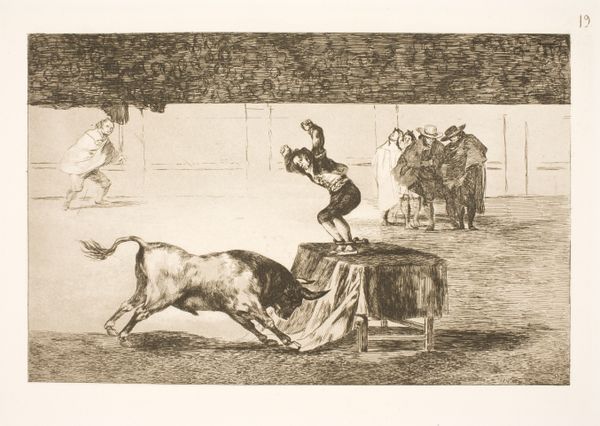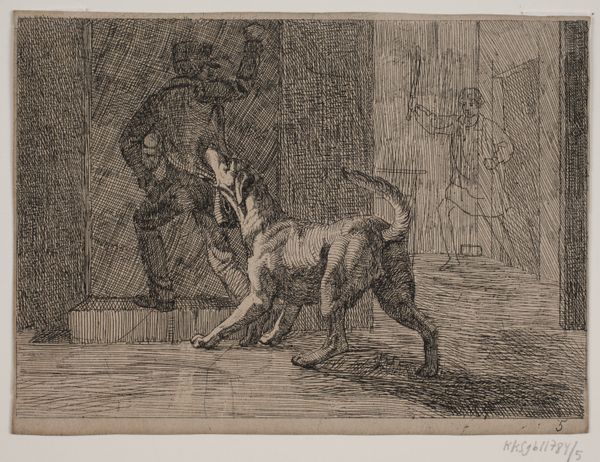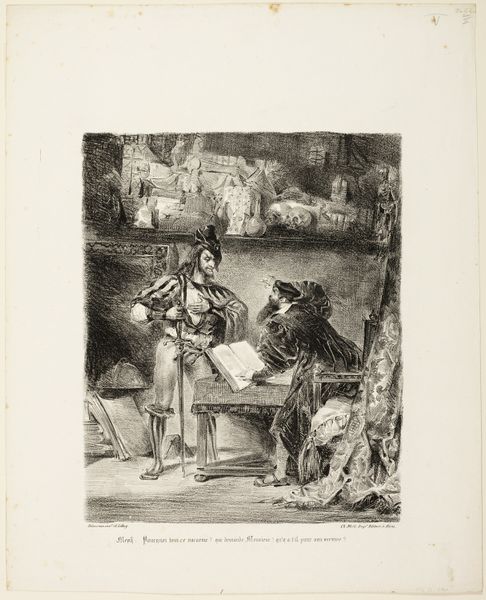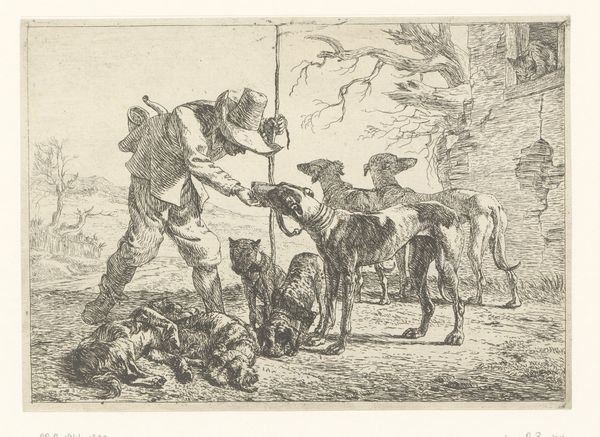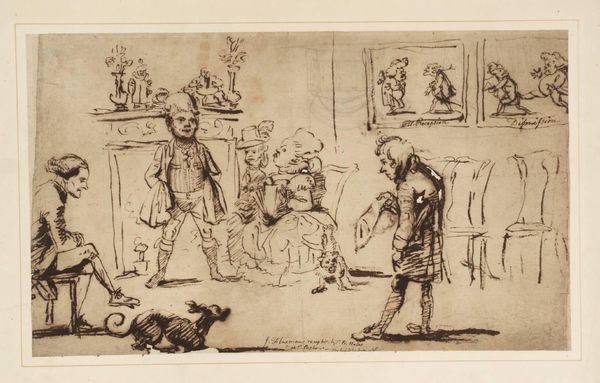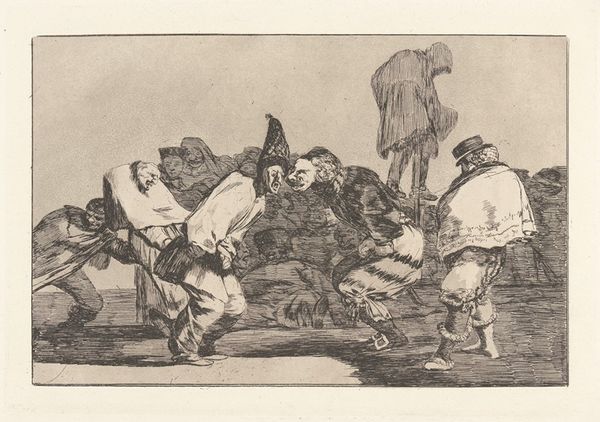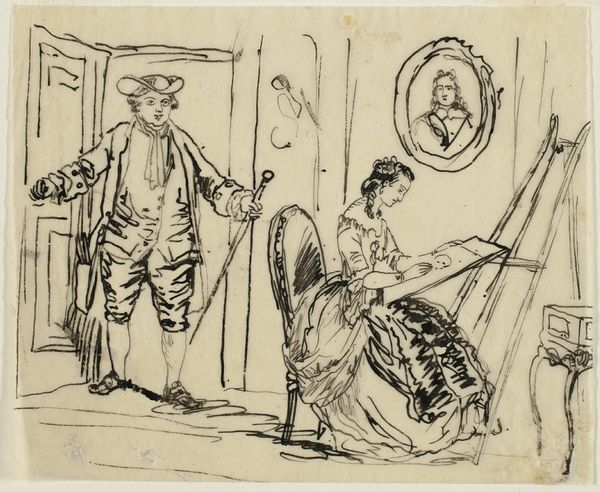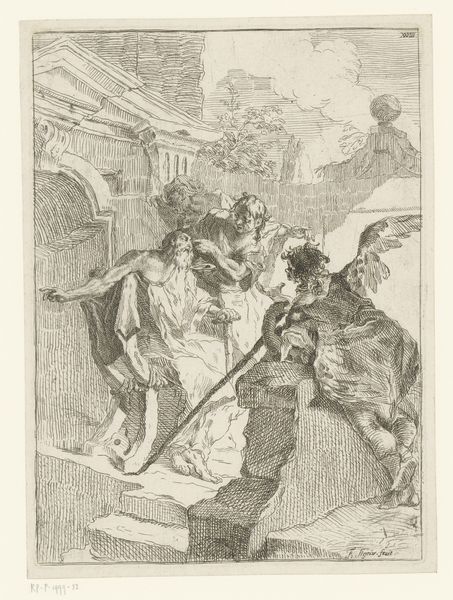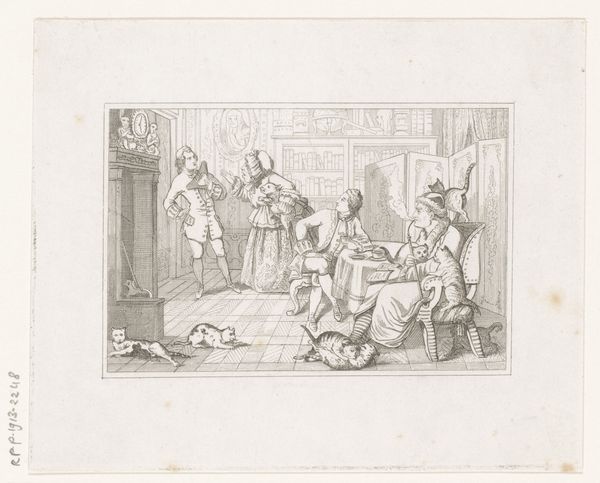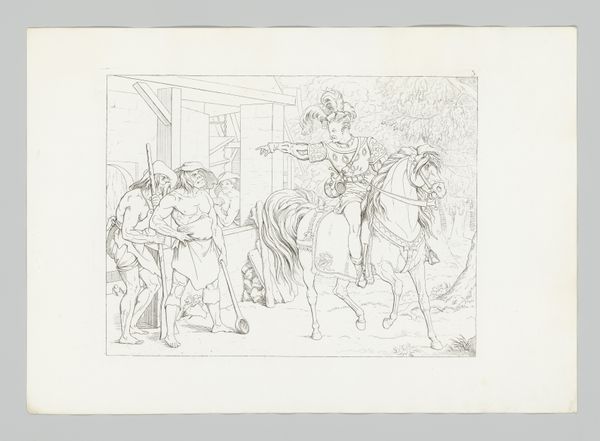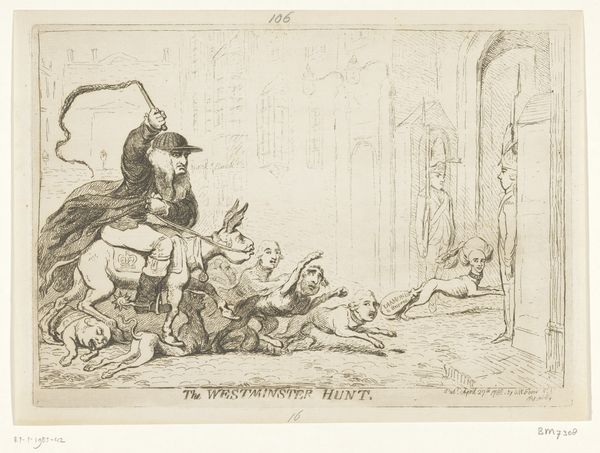
drawing, print, paper, ink, graphite, pen
#
drawing
#
fairy-painting
#
narrative-art
# print
#
caricature
#
paper
#
ink
#
sketchwork
#
line
#
graphite
#
pen
Dimensions: 435 × 336 mm
Copyright: Public Domain
Editor: This whimsical drawing, "De King Im Sit Right Flat in a Chair" by Arthur Burdett Frost, seems like an illustration from a children's book. It's filled with animal characters in human clothing. It feels satirical and rather absurd. What's your read on this, from a historical perspective? Curator: Well, the apparent absurdity is key here. Given Frost's work as a popular illustrator in the late 19th century, particularly for humorous publications, we have to consider this within the context of increasing literacy and the rise of mass media. Caricature and anthropomorphism were common tools for social commentary, reflecting anxieties about class, race, and political power. Editor: So you're suggesting the animal characters are more than just cute illustrations? Curator: Precisely. The fact that the 'King' is depicted so informally, "sit right flat in a chair," signals a subversion of traditional authority. The detailed rendering suggests an interest in portraying specific animal types and personalities which may be commenting on roles and status. Are there elements that stand out to you as potential societal critiques? Editor: I notice the variety of animals; some appear subservient, others more assertive. Perhaps it reflects the rigid social hierarchies of the time? And the king slouched in his chair--could that represent ineffectual leadership? Curator: Indeed! And consider where this image might have been published and viewed. Was it a widely circulated magazine? An illustrated book? Its audience shapes our understanding, its possible interpretations. Frost utilized accessible visual language for complex social messaging. Editor: I see. The artwork, then, acts as a snapshot of the anxieties and social dynamics of the time. Curator: Exactly. Understanding that socio-political context transforms this humorous drawing into a fascinating window into 19th-century society and media culture.
Comments
No comments
Be the first to comment and join the conversation on the ultimate creative platform.
